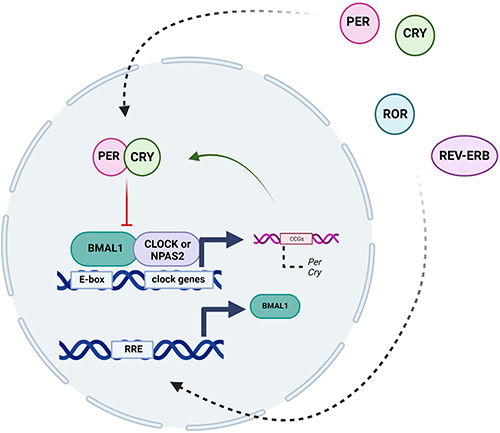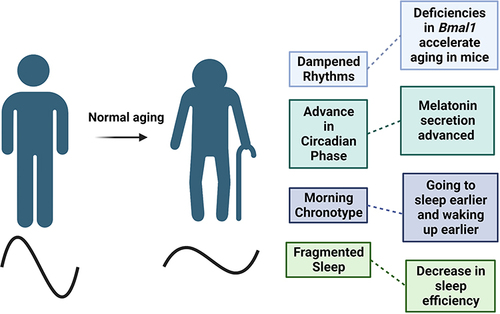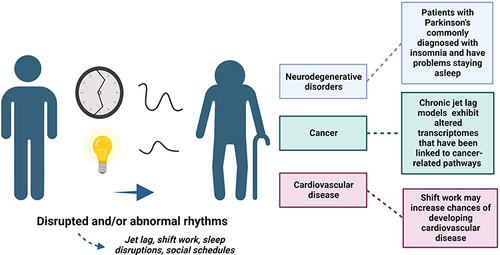Figures & data
Figure 1 The suprachiasmatic nucleus (SCN), the “master” pacemaker, is located in the hypothalamus and is essential in setting 24-hr rhythms in behaviors and physiology based on external stimuli, like the light cycle. The SCN receives direct input from the retina of the eye through a specialized pathway known as the retinohypothalamic tract. When light enters the eye, it activates specialized photoreceptor cells called melanopsin-containing retinal ganglion cells. These cells then send signals to the SCN, which uses this information to adjust the body’s internal clock. Created with BioRender.com.

Figure 2 The molecular clock consists of a transcriptional/translational feedback loop that cycles over 24-hours in the absence of environmental stimuli. The main transcription factors are Circadian Locomotor Output Cycles Kaput (CLOCK), or Neuronal PAS Domain Protein 2 (NPAS2), which bind to Brain and Muscle Arnt-like Protein 1 (BMAL1). These proteins heterodimerize and promote transcription of the Period (Per1, Per2, Per3) and Cryptochrome (Cry1, Cry2) genes. PER and CRY proteins are phosphorylated inhibit the CLOCK/NPAS2-BMAL1 complex, which inhibits their own expression and creates a negative feedback loop. There are additional key regulators of the circadian clock, such as the nuclear receptors REV-ERBα and REV-ERBβ, as well as the retinoic acid orphan receptor (ROR) (RORα, RORβ, and RORγ) establish another feedback loop. RORs positively regulate the expression of BMAL1 by binding to sites Retinoic acid receptor-related Orphan Receptor Element (RORE) elements in the BMAL1 gene promoter. Created with BioRender.com.

Figure 3 Normal aging is characterized by the dampening of circadian rhythms, which leads to shifts in phase and decreases in amplitude. These changes can also contribute to sleep characteristics as total sleep time and quality decreases with age. Created with BioRender.com.

Figure 4 Disruptions in rhythms, like shift work, and abnormal rhythms can accelerate aging and lead to age-related diseases, like neurodegenerative disorders and cardiovascular disease. Differences in rhythms could also predict vulnerability to developing age-related diseases. Created with BioRender.com.

